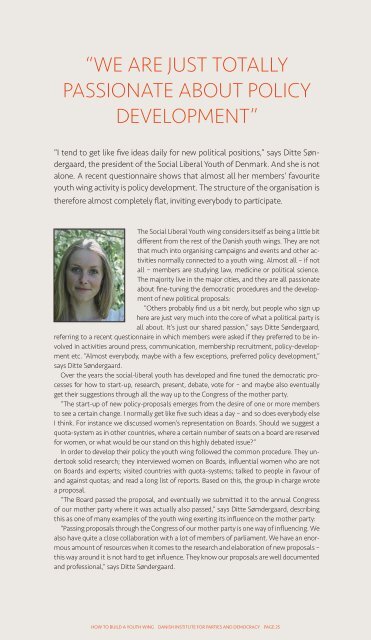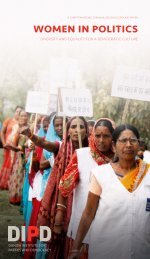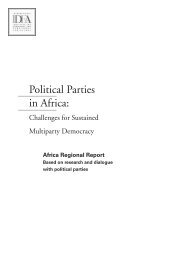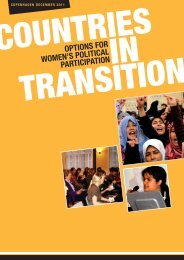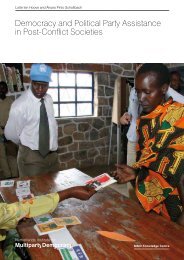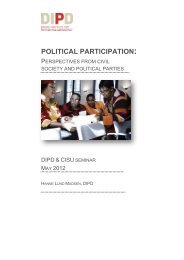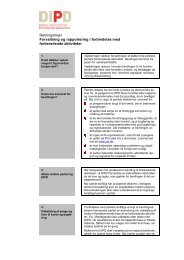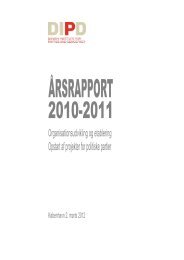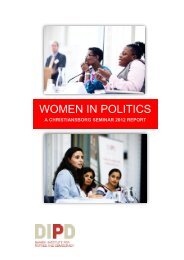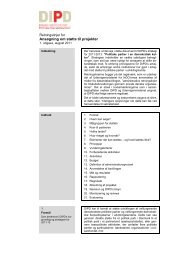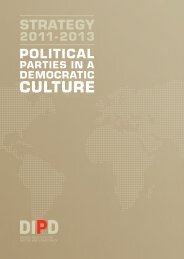HOW TO BUILD A YOUTH WING
HOW TO BUILD A YOUTH WING
HOW TO BUILD A YOUTH WING
Create successful ePaper yourself
Turn your PDF publications into a flip-book with our unique Google optimized e-Paper software.
“WE ARE JUST <strong>TO</strong>TALLY<br />
PASSIONATE ABOUT POLICY<br />
DEVELOPMENT”<br />
“I tend to get like five ideas daily for new political positions,” says Ditte Søndergaard,<br />
the president of the Social Liberal Youth of Denmark. And she is not<br />
alone. A recent questionnaire shows that almost all her members’ favourite<br />
youth wing activity is policy development. The structure of the organisation is<br />
therefore almost completely flat, inviting everybody to participate.<br />
The Social Liberal Youth wing considers itself as being a little bit<br />
different from the rest of the Danish youth wings. They are not<br />
that much into organising campaigns and events and other activities<br />
normally connected to a youth wing. Almost all – if not<br />
all – members are studying law, medicine or political science.<br />
The majority live in the major cities, and they are all passionate<br />
about fine-tuning the democratic procedures and the development<br />
of new political proposals:<br />
“Others probably find us a bit nerdy, but people who sign up<br />
here are just very much into the core of what a political party is<br />
all about. It’s just our shared passion,” says Ditte Søndergaard,<br />
referring to a recent questionnaire in which members were asked if they preferred to be involved<br />
in activities around press, communication, membership recruitment, policy-development<br />
etc. “Almost everybody, maybe with a few exceptions, preferred policy development,”<br />
says Ditte Søndergaard.<br />
Over the years the social-liberal youth has developed and fine tuned the democratic processes<br />
for how to start-up, research, present, debate, vote for – and maybe also eventually<br />
get their suggestions through all the way up to the Congress of the mother party.<br />
“The start-up of new policy-proposals emerges from the desire of one or more members<br />
to see a certain change. I normally get like five such ideas a day – and so does everybody else<br />
I think. For instance we discussed women’s representation on Boards. Should we suggest a<br />
quota-system as in other countries, where a certain number of seats on a board are reserved<br />
for women, or what would be our stand on this highly debated issue?”<br />
In order to develop their policy the youth wing followed the common procedure. They undertook<br />
solid research; they interviewed women on Boards, influential women who are not<br />
on Boards and experts; visited countries with quota-systems; talked to people in favour of<br />
and against quotas; and read a long list of reports. Based on this, the group in charge wrote<br />
a proposal.<br />
“The Board passed the proposal, and eventually we submitted it to the annual Congress<br />
of our mother party where it was actually also passed,” says Ditte Sømdergaard, describing<br />
this as one of many examples of the youth wing exerting its influence on the mother party:<br />
“Passing proposals through the Congress of our mother party is one way of influencing. We<br />
also have quite a close collaboration with a lot of members of parliament. We have an enormous<br />
amount of resources when it comes to the research and elaboration of new proposals –<br />
this way around it is not hard to get influence. They know our proposals are well documented<br />
and professional,” says Ditte Søndergaard.<br />
<strong>HOW</strong> <strong>TO</strong> <strong>BUILD</strong> A <strong>YOUTH</strong> <strong>WING</strong> DANIsH INsTITUTe fOr pArTIes AND DemOcrAcY pAGe 25


